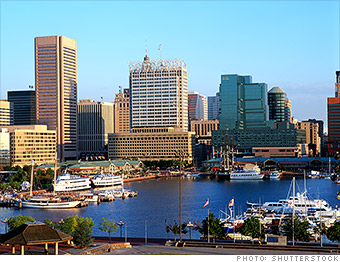

While the average worker in the U.S. saw their wages rise 2.5% over the past year, workers in these five cities saw a much bigger bump, according to PayScale.

Once a major industrial city known for low-paying jobs in steel and auto manufacturing, Baltimore's employment landscape has dramatically shifted.
Home to investment firms like T. Rowe Price (TROW) and Legg Mason (LM), the area added 1,600 financial services jobs over the past 12 months, according to the Bureau of Labor Statistics.
Health care is another hotspot, thanks to Johns Hopkins and dozens of other research hospitals and medical centers located throughout the metro area.
Those higher-paying jobs have lifted average pay faster than the national average this year.
That has helped as government workers seek safety in the private sector, said Bardaro.
Sequestration, with its enforced furloughs and hiring freezes, forced many government workers into the private sector, with the number of government jobs falling nearly 1% in Baltimore over the past year, said Bardaro.